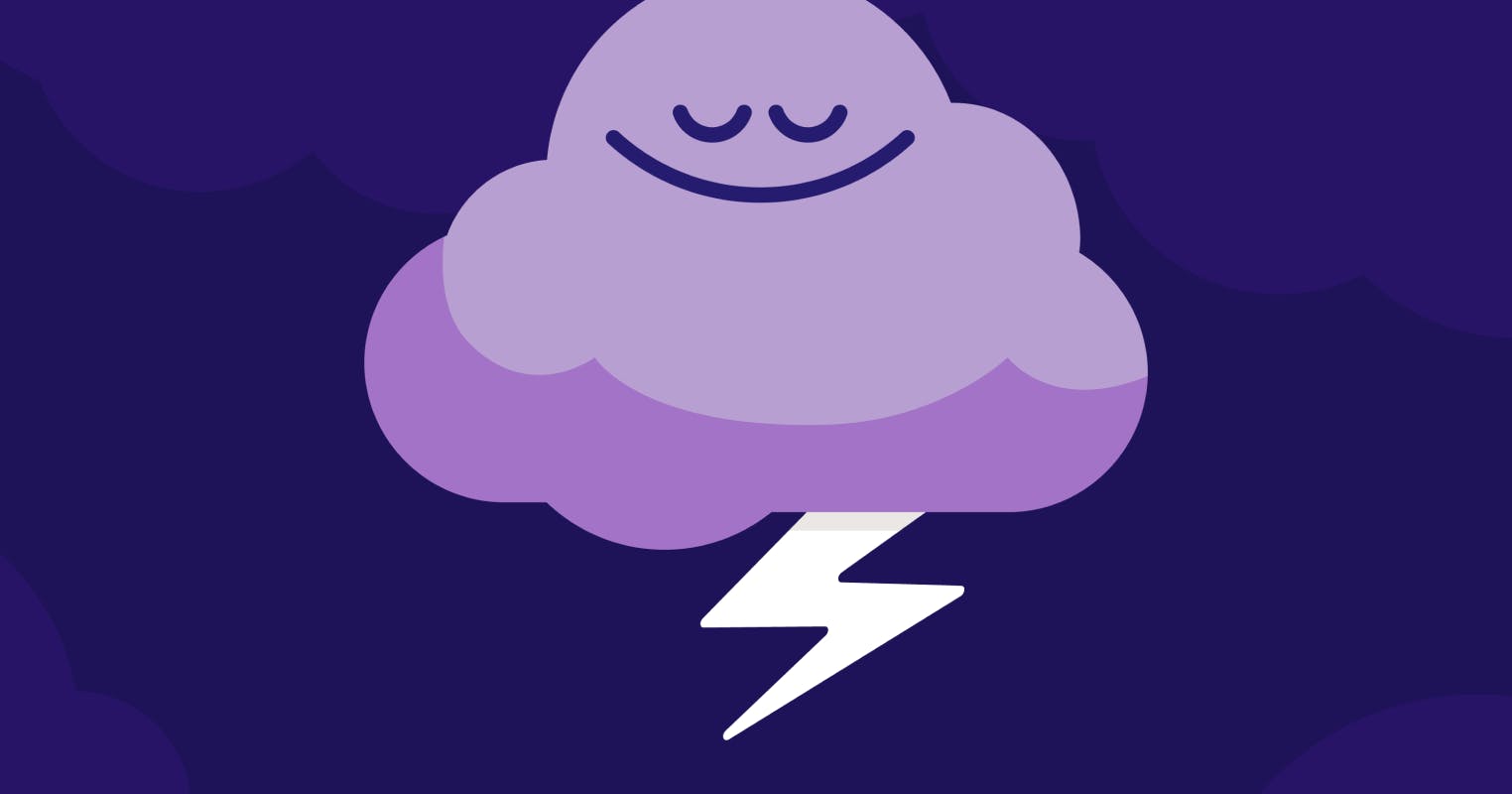How to stop nightmares
By Your Headspace Mindfulness & Meditation Experts
Mar 26, 2021
Most of us have had restless sleep caused by a nightmare. Sometimes we can laugh them off (what a relief — we didn’t actually give that presentation naked), but sometimes they can be more disturbing or disruptive as we experience or relive traumatic episodes and emotions in our sleep.
Ready to get better sleep?
Start your free trial
Create the ideal atmosphere for a restful night’s sleep
Relax with the sounds of a gentle wind rustling trees while a guitar melody plays softly.

Sleep Music: Singing Pines
45 mins
Dreaming and trying to analyze those dreams is something that intrigues many of us. But for some, nightmares are a serious issue that can prevent us from getting our much-needed sleep and be a sign of underlying emotional issues that are not easy to confront.
Part of the terrifying thing about nightmares is they can feel out of our control. But the good news is there are specific steps that we can take in our waking hours to reframe our thoughts, and therefore help with learning how to stop bad dreams from disrupting our sleep and impacting our days.
Understanding nightmares
In the Universal Etymological English Dictionary, first published in 1721, a nightmare was defined as a “disease when a man in his sleep supposes he has a great weight laying upon him.”
While the essence of that definition still rings true to an extent, research into dreams has moved on significantly in the last 300 years. But the purpose of dreaming, and therefore nightmares, remains one of the most hotly debated topics in psychology.
Acclaimed neurologist Sigmund Freud thought that dreams were a way for us to fulfill unconscious desires repressed from conscious awareness. Carl Jung, the Swiss psychiatrist who founded the field of analytical psychology, believed that dreams were the psyche’s way of communicating messages to the dreamer from the unconscious.
Others propose that dreams are just our attempt to interpret random signals generated by emotions and patterns in the brain. A more recent theory argues that the dreaming brain acts as a “virtual reality generator” to help us to learn about and make sense of the real world.
Whatever the meaning or non-meaning, we are more likely to experience fear than any other emotion when dreaming — a Harvard Medical School study found it accounts for 32% of all emotions experienced in our dreams.

Adult nightmares
Around 5% to 8% of the adult population are estimated to have a problem with frequent nightmares. And a published study of 1,049 insomnia sufferers in Montreal, Quebec, Canada, found that 18.3% of those with that sleep disorder experienced nightmares.
Nightmares are often reported in creative people who demonstrate “thin boundaries” on psychological tests. Persons with thin boundaries are less likely to define the world around them in concrete terms. Instead of seeing issues as being black and white, they instead see themselves and the world in shades of gray. Use of medications that affect neurotransmitter levels of the central nervous system, such as antidepressants, narcotics, or barbiturates are also associated with nightmares. As is withdrawing from drugs that cause REM sleep rebound, such as ethanol, barbiturates, and benzodiazepines.
Our mental health impacts the prevalence of nightmares, too. Stress, anxiety, and sleep issues can all play their part as well as, perhaps most pertinently, post-traumatic stress disorder. Research has found 71% to 96% of PTSD sufferers can suffer from nightmares. So if what is happening in our mind during the day affects our brain activity when we sleep, finding a different perspective when we’re awake could hold the key to understanding how to stop nightmares.
How to prevent bad dreams
A study of 587 students published in the Scandinavian Journal of Psychology found that those who were more mindful in their daily lives were less likely to experience negative emotions in their dreams. A regular meditation practice has been proven to shrink the amygdala, the part of the brain associated with fear, in studies using MRI scans.
Stress and anxiety both affect our minds at day and at night, so examining these issues could help us with learning how to stop having nightmares.
While they are two different states, stress and anxiety share many of the same physiological symptoms. Both trigger the autonomic nervous system, leading to a spike in the release of epinephrine and cortisol — the “stress hormones” — that can raise our heart rate and blood pressure.
But research of medical students in Thailand found that a four-day meditation program reduced levels of cortisol and therefore stress.
A published study conducted at Google and Roche with 238 employees compared eight weeks of Headspace to a waitlist control group. The results showed employees had a 31% reduction in anxiety after using Headspace. A 2018 study of 88 medical students found that the participants who used Headspace for just 10 days had a 12% decrease in stress. And a separate study found that people who used Headspace for 30 days reduced stress by a third.
A study at the University of Colorado found a transcendental meditation program was effective in the rehabilitation of Vietnam veterans who were having difficulty readjusting to civilian life, and it decreased anxiety, depression, alcohol use, and insomnia.
So if meditation and mindfulness is proven to lessen the impact of factors that can cause bad dreams, let’s look in more detail at how to change our perspective and find some relief.
Time to relax

Mini-Meditation: Letting Go of Stress
1 min
Reframing our thoughts
Meditation will not eradicate all the stress and anxiety from our lives — that is not the intention — but does help us learn how to sit with unhelpful emotions more comfortably, without getting caught up in the storyline that a dream might present. If anything, meditation teaches us to treat our cinematic dreams as we would our everyday thoughts — something to be experienced without adding the fuel of further commentary.
Headspace’s Blue Sky animation compares the mind to a bright, blue sky and our thoughts, feelings, and experiences to clouds that appear. However cloudy it may look, the blue sky is always present. And after the sun goes down, the same analogy could apply to the sky on a clear, starry night.
Meditation can help us to see our negative thoughts with a clearer mind and know that they will pass. Same with a nightmare. It happened. You observed it. It ended. Let it go. We don’t have to attach significance or meaning to our dreams.
Headspace co-founder and former Buddhist monk Andy Puddicombe stresses that thinking — and even some stress — is not a bad thing. But meditation, especially when practiced for 10 minutes every day, helps us maintain a sense of balance and ease with our thoughts, including ones that feel negative.
A similar principle can be applied to dreaming, and Andy says: “If the mind’s very busy or very restless, or if we’re caught up in any anxious, hectic dreams, then we’re going to wake up feeling tired. If you can, maybe meditate twice a day, doing one just before you go to sleep that will help settle the mind.
“Dreaming is not a bad thing. Dreaming is an important part of the sleeping process. But there is a way of settling the mind down within those dreams,” he says.
Courses on the Headspace app include the 30-day Letting Go Of Stress and Managing Anxiety packs (available only to Headspace subscribers). These both use the specific technique of noting, which helps us to recognize a stressful or anxious thought for what it is, and then let go of it and move on. The body scan helps us to identify the physical sensation of unhelpful emotions in the body, which further helps to diminish their power over us. And visualization encourages us to imagine a flow of light and comfort through our body, for example, to help a sense of ease and relief return.
The app also has a section designated specifically for sleep. Meditation increases the prospect of a good night’s sleep by helping to lower the heart rate, which encourages slower breathing and thereby our ability to have a quality night’s rest. There is a specific 10-minute After a Nightmare SOS meditation (available only to Headspace subscribers) to help wash away residual feelings of fear and discomfort that have woken us up in the night, and find the comfort to return to sleep. Other guided meditations on the app include wind-down exercises to help with switching off and falling back to sleep.
Music and sound can be a powerful tool in controlling our mood, and the Headspace app offers an array of sleep music and 3D soundscapes from the natural world to help us wind down and sleep better.
And just as we should reframe our feelings and emotions in our waking hours in the hopes that it will help with recurring nightmares, we should also remember to look at the storylines in our dreams from a different perspective to control their impact on our thoughts the following day.
Because just as meditation reminds us that our thoughts are just that, only thoughts, we should also remember that it’s only a dream.


Sleep made simple
- Find your perfect bedtime routine with hours of relaxing music, sounds, and stories to choose from
- Get more restful sleep with our Sleep Health course: exercises developed with leading sleep scientists
- Feel your best from morning to bedtime with access to hundreds of stress-relieving meditations


Stay in the loop
Be the first to get updates on our latest content, special offers, and new features.
By signing up, you’re agreeing to receive marketing emails from Headspace. You can unsubscribe at any time. For more details, check out our Privacy Policy.
- © 2025 Headspace Inc.
- Terms & conditions
- Privacy policy
- Consumer Health Data
- Your privacy choices
- CA Privacy Notice







